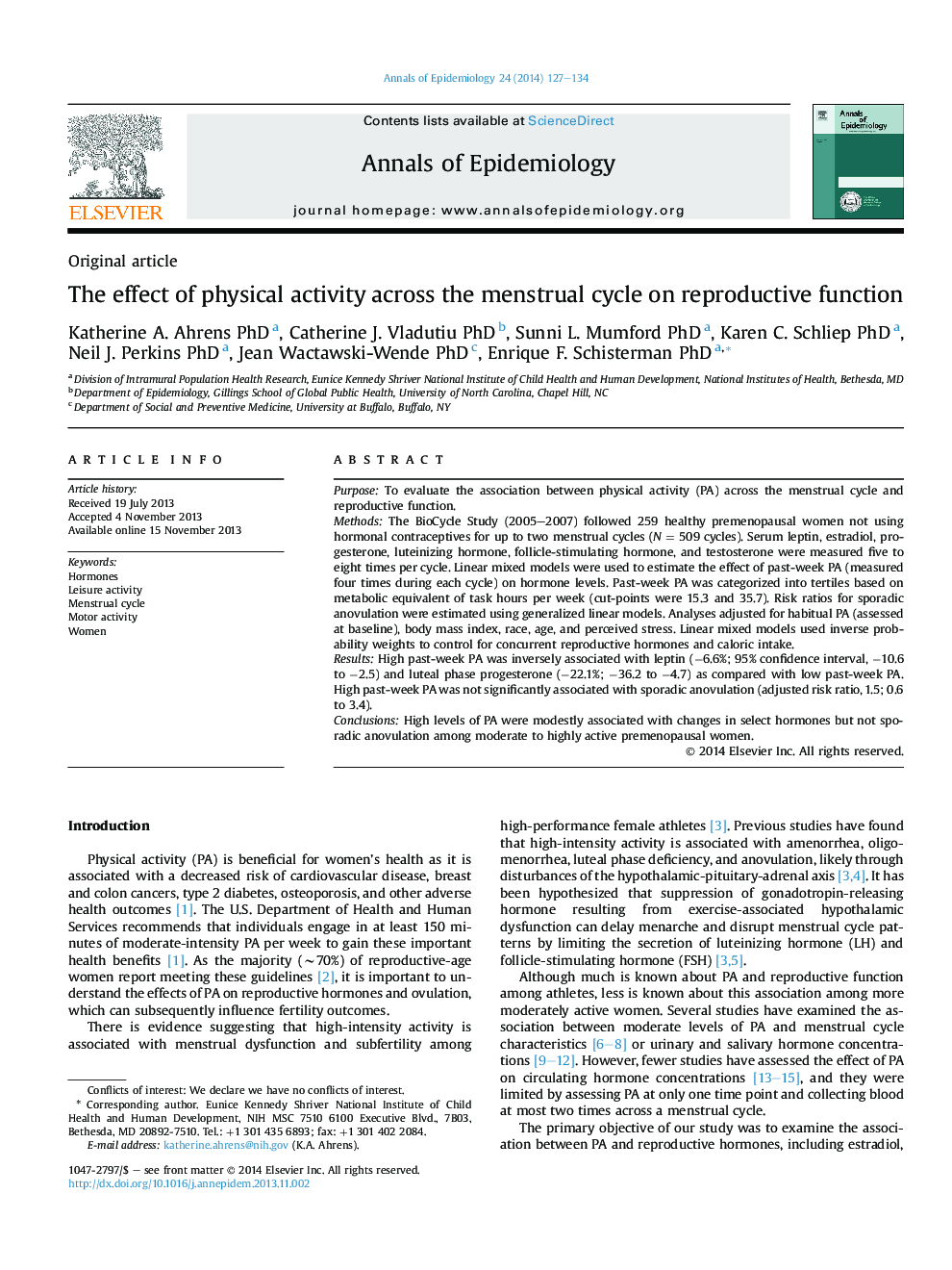| Article ID | Journal | Published Year | Pages | File Type |
|---|---|---|---|---|
| 3444324 | Annals of Epidemiology | 2014 | 8 Pages |
PurposeTo evaluate the association between physical activity (PA) across the menstrual cycle and reproductive function.MethodsThe BioCycle Study (2005–2007) followed 259 healthy premenopausal women not using hormonal contraceptives for up to two menstrual cycles (N = 509 cycles). Serum leptin, estradiol, progesterone, luteinizing hormone, follicle-stimulating hormone, and testosterone were measured five to eight times per cycle. Linear mixed models were used to estimate the effect of past-week PA (measured four times during each cycle) on hormone levels. Past-week PA was categorized into tertiles based on metabolic equivalent of task hours per week (cut-points were 15.3 and 35.7). Risk ratios for sporadic anovulation were estimated using generalized linear models. Analyses adjusted for habitual PA (assessed at baseline), body mass index, race, age, and perceived stress. Linear mixed models used inverse probability weights to control for concurrent reproductive hormones and caloric intake.ResultsHigh past-week PA was inversely associated with leptin (−6.6%; 95% confidence interval, −10.6 to −2.5) and luteal phase progesterone (−22.1%; −36.2 to −4.7) as compared with low past-week PA. High past-week PA was not significantly associated with sporadic anovulation (adjusted risk ratio, 1.5; 0.6 to 3.4).ConclusionsHigh levels of PA were modestly associated with changes in select hormones but not sporadic anovulation among moderate to highly active premenopausal women.
